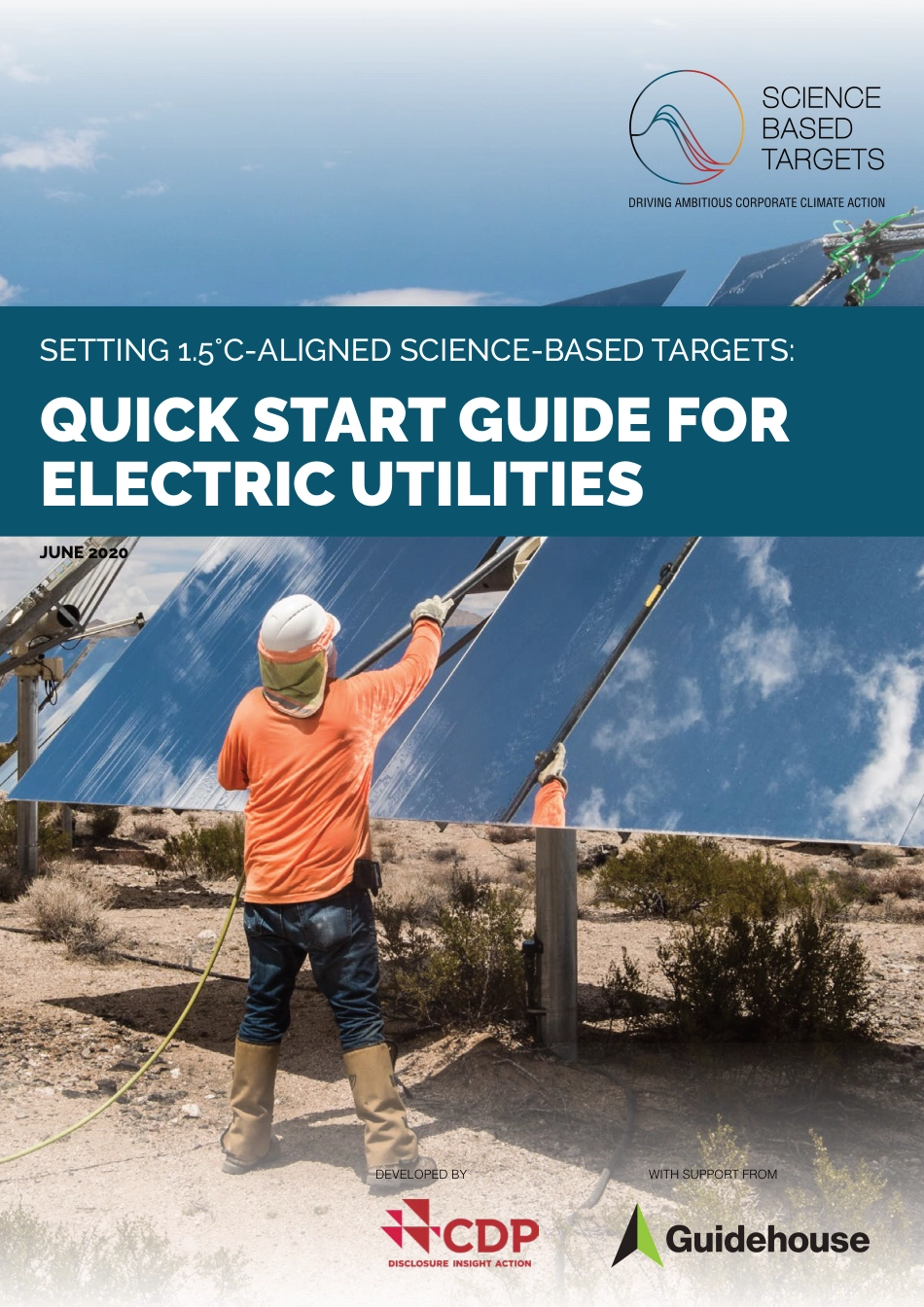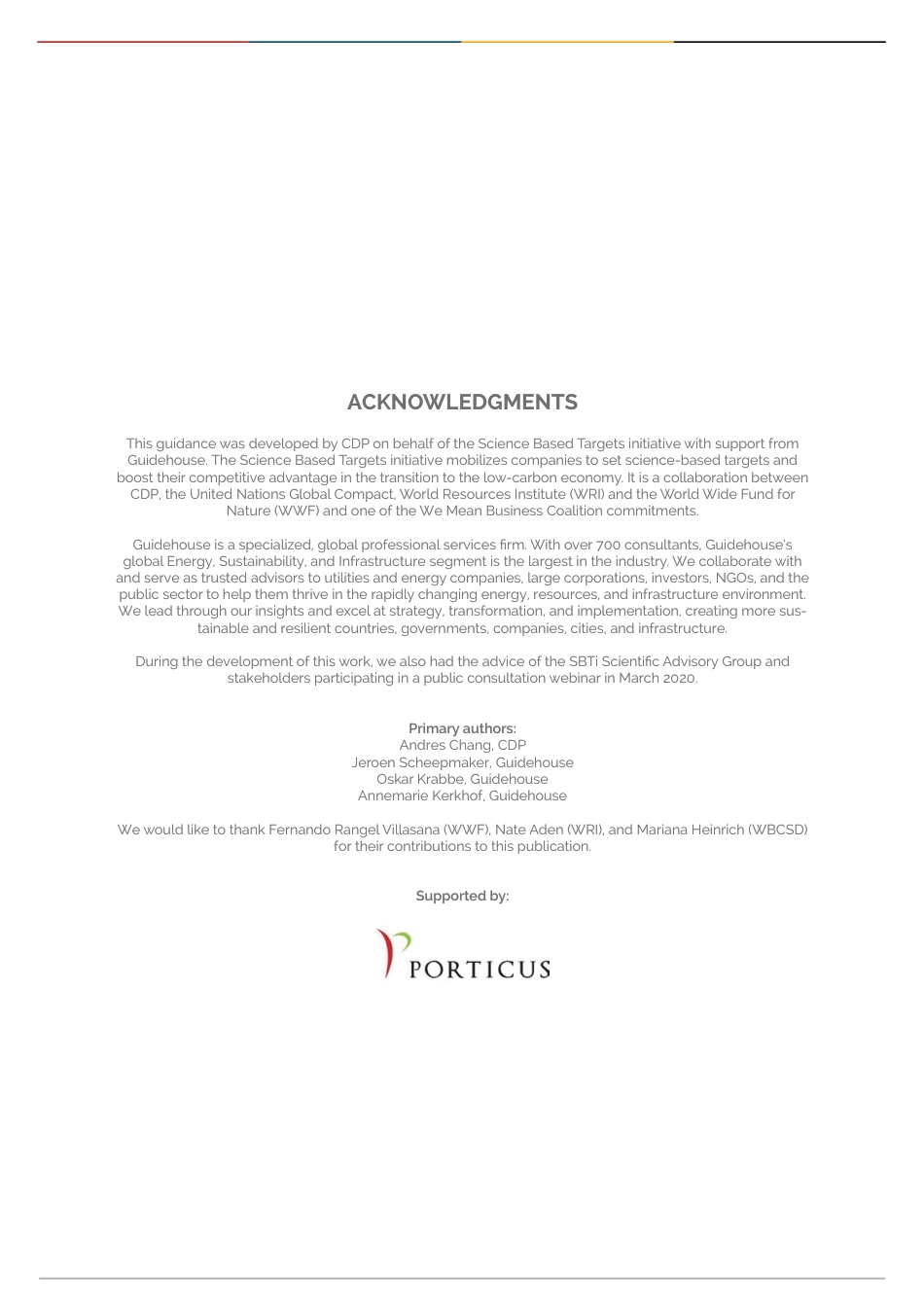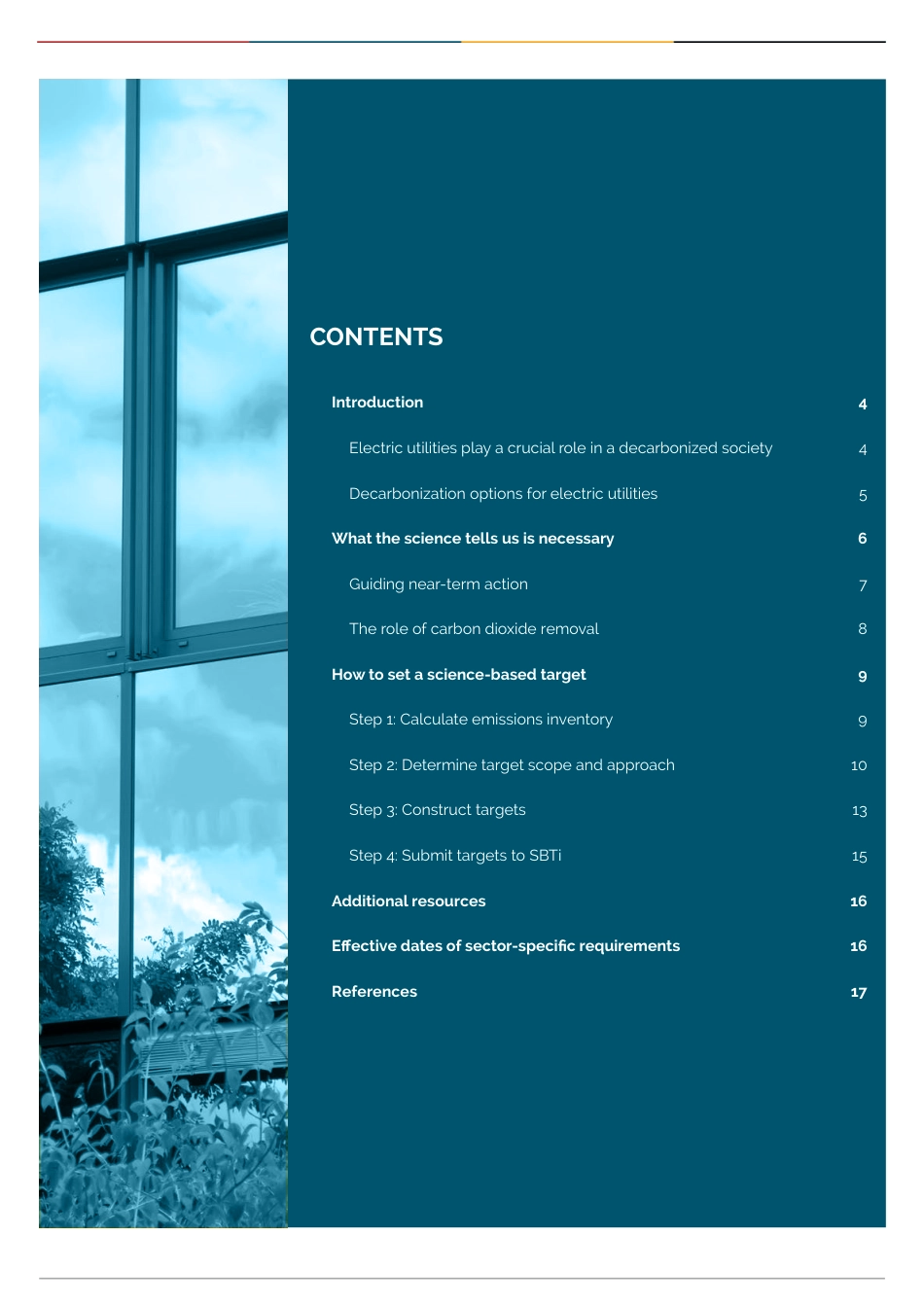SETTING 1.5°C-ALIGNED SCIENCE-BASED TARGETS:QUICK START GUIDE FOR ELECTRIC UTILITIESJUNE 2020DEVELOPED BYWITH SUPPORT FROMACKNOWLEDGMENTS This guidance was developed by CDP on behalf of the Science Based Targets initiative with support from Guidehouse. The Science Based Targets initiative mobilizes companies to set science-based targets and boost their competitive advantage in the transition to the low-carbon economy. It is a collaboration between CDP, the United Nations Global Compact, World Resources Institute (WRI) and the World Wide Fund for Nature (WWF) and one of the We Mean Business Coalition commitments. Guidehouse is a specialized, global professional services firm. With over 700 consultants, Guidehouse’s global Energy, Sustainability, and Infrastructure segment is the largest in the industry. We collaborate with and serve as trusted advisors to utilities and energy companies, large corporations, investors, NGOs, and the public sector to help them thrive in the rapidly changing energy, resources, and infrastructure environment. We lead through our insights and excel at strategy, transformation, and implementation, creating more sus-tainable and resilient countries, governments, companies, cities, and infrastructure.During the development of this work, we also had the advice of the SBTi Scientific Advisory Group and stakeholders participating in a public consultation webinar in March 2020.Primary authors:Andres Chang, CDPJeroen Scheepmaker, GuidehouseOskar Krabbe, GuidehouseAnnemarie Kerkhof, GuidehouseWe would like to thank Fernando Rangel Villasana (WWF), Nate Aden (WRI), and Mariana Heinrich (WBCSD) for their contributions to this publication.Supported by:CONTENTSIntroduction 4Electric utilities play a crucial role in a ...



